A few months ago we posted up some teaser video footage about our experience riding the Kawasaki Ninja H2 (which you can view here). However, to get the full experience you can read the complete article below:
After taking Kawasaki's groundbreaking supercharged Ninja H2R last year and running it against some modified supercars ("Showdown," Aug./Sept. 2015), I have to admit we'd kind of forgotten about the street-legal Ninja H2 brother to the racetrack-only H2R. We had the opportunity to ride the H2 around Auto Club Speedway's road course in California for a press day a few months prior to racing the H2R at the No Fly Zone speed contest, but to tell you the truth, while the H2 certainly had some serious power and was a blast to ride for a day, pulling the trigger on the H2R on that airport runway made the H2 fade into distant memory.
That is, until I noticed that venerated speed merchant Brock Davidson of Brock’s Performance was doing a lot of R&D work on parts for the Ninja H2. Being specifically marketed as a street-legal motorcycle means that Kawasaki has sold far more H2s than H2Rs, and the vast majority of H2 owners have been going to Brock’s Performance looking to unleash the power and speed potential of their “blown” bikes. When I met up with Davidson at the annual AIMExpo in Orlando back in October of last year, he gave me a quick overview of the H2 his company used a month before to set a speed record of 219.40 mph at the Ohio Mile with veteran land speed racer Zack Millholland.
My interest was piqued because an H2 testbike had been previously offered to Sport Rider by Kawasaki. For some time after their debut, Kawasaki USA was keeping a tight rein on the single Ninja H2R and handful of H2 units available and only released them for special circumstances like the “Showdown” story. Those rusty old gears began to turn in my head: Why not build the ultimate “bolt-on” project bike?
Is That All?
Davidson fanned the imagination flames when he informed me his Ninja H2 Stage II Performance Kit boosted power from a stock 208 rear-wheel horsepower to more than 274 hp on the Brock's Performance dyno (and, no, we have yet to see a Ninja H2R come anywhere near the claimed 310 hp on any dyno…). But it was when Davidson read off the list of parts he used to get that power that I was left slack-jawed and utterly stunned.
The list of parts reads like this: a Brock’s Performance Alien Head 2 full exhaust, Brock’s Flash Package (a Guhl Motors re-flashed ECU and Dynojet Power Commander V), and a DNA air filter; a ceramic front wheel bearing set, fully adjustable rear suspension window links, and a steering damper riser kit (to allow the fork tubes to be raised without interference issues) are also included. To think that the simple combination of full exhaust, re-flashed ECU and PCV, plus an air filter could result in a 30-percent boost in power is unheard of in these modern times. Granted, the starting point is a supercharged Ninja H2, a $25K motorcycle; regardless, it’s still an astonishing power increase no matter which way you look at it.
Components like the DNA air filter and ceramic bearings might not seem like they add much to the performance at first glance, but rest assured they make a difference. Brock’s Performance is one of the scant few speed shops that actually tests everything before they agree to sell it. “Oh, I could surely make a lot more money selling all sorts of knickknacks and doodads,” Davidson says matter-of-factly. “That’s not how I work. I won’t sell anything that doesn’t make your bike go faster.”
Sigh...I Hate Fire Drills
Davidson and I began tossing around ideas once we were given the green light by Kawasaki in late March to modify the Ninja H2 testbike. Originally the plan was to rent a suitable top-speed venue to make our runs without any outside distractions. The subject of the Mojave Air and Space Port airfield and the bi-annual Mojave Magnum speed event came up, but the event was just two weeks away and a call to the organizers revealed that race entries for the first 2016 event in April were already sold out. We were put on a waiting list but didn't have high hopes of getting an entry. And, besides, both Davidson and I detest "fire drills" where you're forced to whip something together at the last minute (even though that's usually par for the course when it comes to something like this at Sport Rider).
But then a mere five days before the start of the event, we received a phone call from the organizers telling us that enough entries had canceled that we were being offered a spot in the lineup (the weather forecast was for a possibility of showers with blustery conditions, so many figured it wouldn’t be worth the trip). Sigh… Did someone just mention fire drill? The opportunity was simply too good to pass up, so Davidson and I decided to go ahead and try to put everything together.
Brock's Performance overnighted the parts to the SR offices (along with the Stage II Performance Kit, Davidson also sent his H2 clutch kit and a set of beautiful carbon-fiber Rotobox wheels), with Davidson himself making the trip to help SR Assistant Editor Will Steenrod with assembly and tuning. In just two days, the pair managed to install all the parts and ensure the bike was running correctly on our shop dyno. The three of us and the bike made it out to Mojave just in time for final tech inspection on Friday night. There was a light rain beginning to fall, but the weather forecast said the storm would pass over and be gone by the morning.
Saturday
The Mojave Magnum event is so-called because it is actually more than the usual standing half-mile or mile run; there are timing lights at the half-mile, mile, and 1.5-mile marks, meaning you really get the chance to see what your bike (or car) can do on top. This was one of the reasons Davidson wanted to enter the event. "It's going to take at least a mile to showcase the horsepower of this bike," he told me when I was looking around for venues to run.
The event is held on both Saturday and Sunday, so even though we got out to the airfield bright and early on Saturday morning, we spent some time ironing out a few details and weren’t able to get into the staging line for our first run until around 11 a.m. Unfortunately, the morning following an overnight storm is usually accompanied by high winds, and Saturday was no exception. My first “rookie” run required that I keep the Ninja H2’s speed below 180 mph, so I wasn’t feeling the crosswinds that much. But on my next few runs where I was allowed to cut loose, the crosswinds increased to more than 35 mph, and it became a lesson in survival.
On my first full-throttle run, the rear suspension was squatting too much under power, causing the Kawasaki to wheelie over bumps…at 180 mph. The crosswinds would cause the front tire to come down out of line with the rear, resulting in a nasty wobble before being calmed by the Ninja H2’s steering damper.
Despite suspension changes to cure the rear-end squat, as my speed increased, the wobbles became more violent. It was bad enough that I backed out of the throttle after the mile marker nearly every time and only got up to a max speed of 197 mph after a handful of runs. I told Davidson, “I can’t go any faster. I really feel like I’m going to crash this thing if I do.” We decided to wait until Sunday, as the weather forecast was for calm conditions in the morning.
Sunday
We woke up at zero-dark-30 on Sunday in order to get in line early and be one of the first vehicles to make a run that morning. As I rode up to the start line, I noticed that none of the trackside flags were moving, and the airfield's windsock was totally limp. Perfect conditions. So it was up to me to make it happen.
I started the run in second gear in order to avoid any acceleration-killing wheelies; the Brock’s Performance Ninja H2 had no problem pulling the taller gear. With no crosswinds, the Kawasaki was tracking straight and true, and I kept the throttle pinned as I watched the mile and 1.5-mile markers flash by. I should note here that it was not some calm ride down the block; the Ninja H2 doesn’t exactly have much fairing to hide behind, and the turbulence was violent enough on the top of my helmet, shoulders, and feet that I had to hold on tight with both my hands and legs to keep from getting blown off the bike.
When I got my timing slip, it was a relief (and satisfaction) to see the numbers: 193.9 mph in the half-mile, 216.7 mph in the mile, and a top speed of 221.6 mph at the 1.5-mile marker! When I showed the slip to Davidson, he was ecstatic, but I told him to calm down…because I knew we could go even faster.
The Brock’s Ninja H2 was powerful and fast enough that as we passed the mile marker, the bike began to hit the rev limiter in sixth gear—meaning it still had a lot more speed left. So as we waited in line for our next run (I rode right back into line in order to get in our next run as quickly as possible), Steenrod, Davidson, and our good friend (and veteran land speed racer) Scott Horner spun wrenches and busted knuckles to fit a one-tooth-smaller rear sprocket to raise the gearing.
On my next run, everything worked just as well as the previous run, and as I focused on the 1.5-mile markers, I once again felt the engine hesitation as it hit the rev limiter. We could go faster still; and yet when I got my timing slip, I couldn’t believe it. The Brock’s Performance Ninja H2 achieved 197.7 mph in the standing half-mile, 220.4 mph in the mile (breaking the record set by Millholland earlier)…and a top speed of 226.9 mph at the 1.5-mile lights! Once again, Davidson was overjoyed when he saw the numbers, and once again, I told him we could go faster; I figured we could probably break 235 mph with the right gearing.
But this time Davidson had some bad news: The gearing on the Ninja H2 couldn’t be made any taller. A smaller rear sprocket would cause the chain to hit the sprocket mount bolts, and a larger countershaft could not be fitted because of a guard cast into the engine cases. I was a little frustrated at the time—but 226.9 mph is certainly nothing to sneeze at.
Veteran land speed racer Horner put everything into perspective. “You shouldn’t downplay this achievement,” he noted. “You need to remember that this bike doesn’t have a full aero fairing, it’s not really lowered that much… Heck, it’s even got the stock wheelbase. You and this bike achieved a speed that many purpose-built land speed bikes haven’t reached, and it was done without any of the usual speed mods…and with just bolt-on parts.”
The Ultimate Bolt-On Project Bike
Needless to say, Davidson and I were both very happy with the results. To boost horsepower by more than 30 percent with just bolt-on parts (costing a total of $2,795 to $3,095, depending on the exhaust) and achieve such a mind-blowing speed is a testament to the R&D in the Brock's Performance kit, as well as the Kawasaki Ninja H2.
And the real kicker? We could have bolted the mirrors and lights back on the Kawasaki and rode it home if we wanted to. Isn’t it great to be a sportbike enthusiast right now?










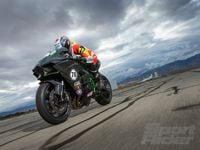


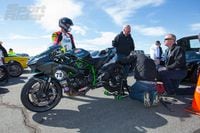
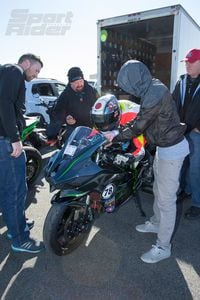



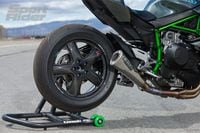
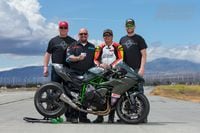
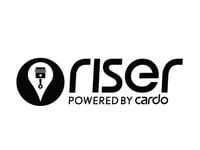
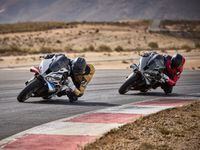
/cloudfront-us-east-1.images.arcpublishing.com/octane/CZ5OM3E43ZEXJHY7LCYXCHLIKI.jpg)
/cloudfront-us-east-1.images.arcpublishing.com/octane/DF5T4K5KPZFJXFCTGPYR77PKJM.jpg)
/cloudfront-us-east-1.images.arcpublishing.com/octane/RMCT2KVQBJHBZMRTSLOVPMOILU.jpg)
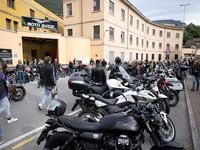
/cloudfront-us-east-1.images.arcpublishing.com/octane/K45KB2XHQVA65DX7VN4ZSMT2BI.jpg)
/cloudfront-us-east-1.images.arcpublishing.com/octane/FNHXQQ56BRD7TO4YIJ453PNG2M.jpg)
/cloudfront-us-east-1.images.arcpublishing.com/octane/OIKJC4JA3ZH7BMKUGWYKBIY5FA.jpg)
/cloudfront-us-east-1.images.arcpublishing.com/octane/MT2SAEWY6FDXFBYSLDE3AEFDTM.jpg)
/cloudfront-us-east-1.images.arcpublishing.com/octane/66UPKPYVURBPRCP5HXSN56MEMM.jpg)
/cloudfront-us-east-1.images.arcpublishing.com/octane/EOREGDSRKFDCRJC6K3EDVHBGCE.jpg)
/cloudfront-us-east-1.images.arcpublishing.com/octane/42RF63Q3LVCMBP3DGTWXFYSMOA.jpg)
/cloudfront-us-east-1.images.arcpublishing.com/octane/XNVY3EVWZFCEVPUGJGAN633LXE.jpg)
/cloudfront-us-east-1.images.arcpublishing.com/octane/2PLTVHXY7FDSPFHKU5CFOC43ZY.jpg)
/cloudfront-us-east-1.images.arcpublishing.com/octane/B6M3WTRLFZGNXBEATNXPVGBBD4.jpg)
/cloudfront-us-east-1.images.arcpublishing.com/octane/4CMH3FI73BEM5D6MFYX42FLDSQ.jpg)
/cloudfront-us-east-1.images.arcpublishing.com/octane/RIHAPYNWU5H3XAOXNOPRWCBTQA.jpg)
/cloudfront-us-east-1.images.arcpublishing.com/octane/HU4NUBCL3VAFZA75VYRCMAUHVM.jpg)
/cloudfront-us-east-1.images.arcpublishing.com/octane/OB43AZK7TRA6XLZL5WRDVW2TDA.jpg)
/cloudfront-us-east-1.images.arcpublishing.com/octane/5G44Y3FXWNFSTEQKCA355PXOPU.jpg)
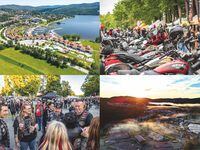
/cloudfront-us-east-1.images.arcpublishing.com/octane/XRI4GTLCVBA5NESASCBIR5LYQI.jpg)
/cloudfront-us-east-1.images.arcpublishing.com/octane/EF7566PXARGMBAOMLWTECYL3LE.jpg)